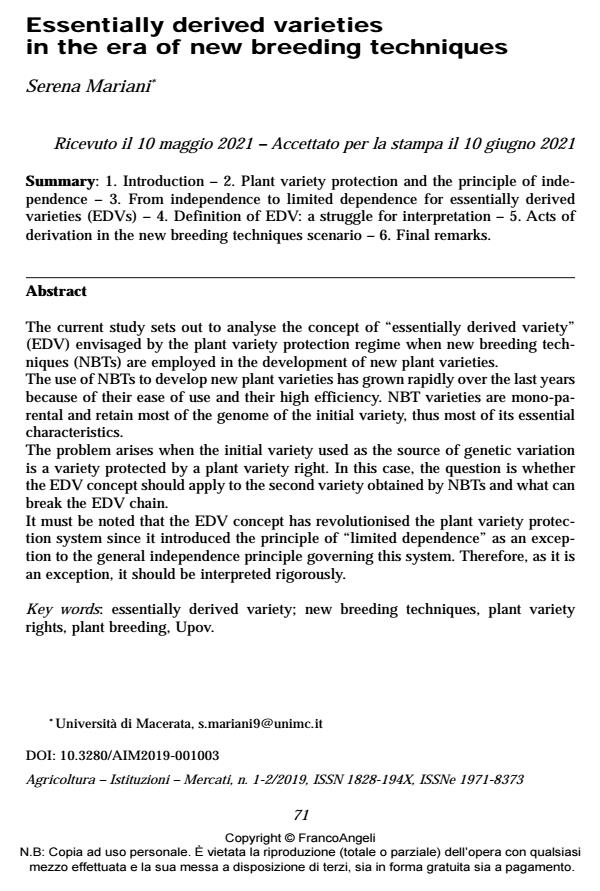Essentially derived varieties in the era of new breeding techniques
Journal title AGRICOLTURA ISTITUZIONI MERCATI
Author/s Serena Mariani
Publishing Year 2021 Issue 2019/1-2
Language English Pages 18 P. 71-88 File size 57 KB
DOI 10.3280/AIM2019-001003
DOI is like a bar code for intellectual property: to have more infomation
click here
Below, you can see the article first page
If you want to buy this article in PDF format, you can do it, following the instructions to buy download credits

FrancoAngeli is member of Publishers International Linking Association, Inc (PILA), a not-for-profit association which run the CrossRef service enabling links to and from online scholarly content.
The current study sets out to analyse the concept of "essentially derived variety" (EDV) envisaged by the plant variety protection regime when new breeding techniques (NBTs) are employed in the development of new plant varieties. The use of NBTs to develop new plant varieties has grown rapidly over the last years because of their ease of use and their high efficiency. NBT varieties are mono-parental and retain most of the genome of the initial variety, thus most of its essential characteristics. The problem arises when the initial variety used as the source of genetic variation is a variety protected by a plant variety right. In this case, the question is whether the EDV concept should apply to the second variety obtained by NBTs and what can break the EDV chain. It must be noted that the EDV concept has revolutionised the plant variety protection system since it introduced the principle of "limited dependence" as an exception to the general independence principle governing this system. Therefore, as it is an exception, it should be interpreted rigorously.
Keywords: essentially derived variety; new breeding techniques, plant variety rights, plant breeding, Upov
Serena Mariani, Essentially derived varieties in the era of new breeding techniques in "AGRICOLTURA ISTITUZIONI MERCATI " 1-2/2019, pp 71-88, DOI: 10.3280/AIM2019-001003